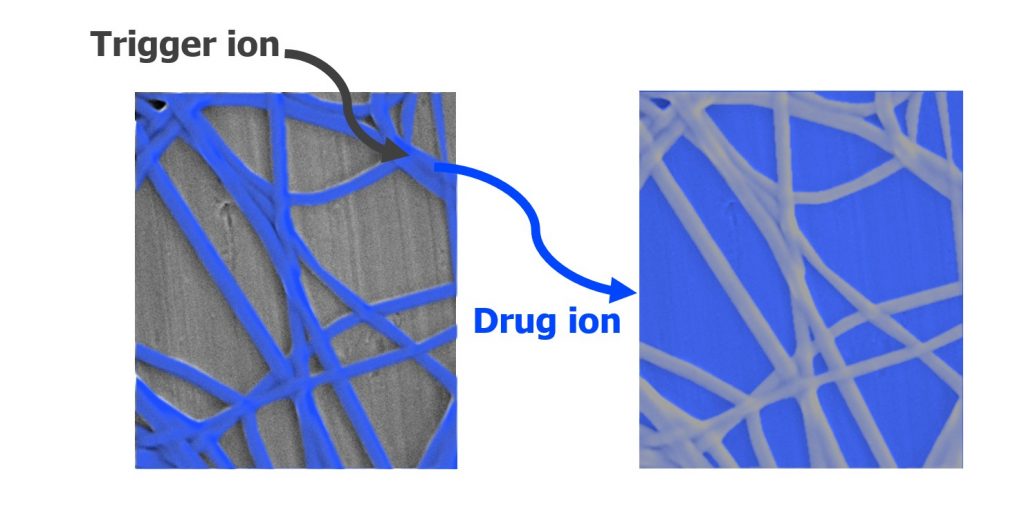Article in Chemical Communications (2025)
27 09 2025
Researchers from University of Warsaw, Faculty of Chemistry (team led by Prof. Agata Michalska and Prof. Krzysztof Maksymiuk, in collaboration with D.Sc. Piotr Piątek, with participation of Dr Dorota Buczyńska, Dr Emilia Stelmach and Dr Justyna Kalisz) and Faculty of Biology (Dr Bohdan Paterczyk), have published an article in Chemical Communications entitled “Towards drug delivery systems triggered by ion-selective interactions” (https://doi.org/10.1039/d5cc00636h).
The team proposed an innovative system for controlled drug release in the presence of a selected ion (trigger ion), inspired by the working principle of selective sensors for ions. In this process the key role is played by ionophore – organic compound selectively interacting with ions triggering the drug release. The drug to be released – cation as ion pair with organic anion, are introduced together with trigger ion selective ionophore and other components into an organic polymeric matrix, which can be a membrane or a system (mat) of nanofibers. Selected trigger ions present in the solution can spontaneously enter the polymer matrix due to high affinity to the ionophore. Formation of a trigger ion – ionophore complex results in drug ions release from the polymer phase to ensure electroneutrality. Unlike most existing drug release systems the proposed method allows application of various trigger ions (e.g. potassium ions) by selecting appropriate ionophore.
The study employed polymer films and nanofiber mats obtained by electrospinning, loaded with methylene blue cations as a model drug and valinomycin as a potassium-selective ionophore. The studies demonstrated that:
- the system is selective, releasing the drug only in the presence of potassium ions, while in the presence of other similar ions, e.g. sodium ions, drug cations are not released,
- the rate and amount of released substance can be tuned by the concentration of trigger ions and the format of the polymer matrix,
- nanofibers enable faster and more precise drug release than conventional polymer films, even at very low potassium ions concentrations.
Key findings:
- the presented system enables selective and controlled drug release in response to the presence of specific ions,
- the use of nanofiber mats significantly enhances the efficiency and sensitivity of the method,
- this method opens new perspectives for designing intelligent drug delivery systems responsive to ionic signals in biological environments.
This work represents a groundbreaking step toward the development of therapeutic biomaterials that respond to specific chemical stimuli in the patient’s environment, with potential applications in personalized medicine.
More details: https://doi.org/10.1039/d5cc00636h

